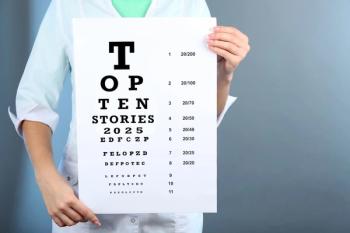
Capsular tension rings enhance performance of multifocal IOLs in study
San Francisco-Capsular tension rings enhance the optical performance of multifocal IOLs by ensuring centration of the lens and reducing irregularities in the posterior capsule such a folds and wrinkles, said Tobias Neuhann, MD, director, AaM Augenklinik am Marienplatz, Munich, Germany.
San Francisco-Capsular tension rings enhance the optical performance of multifocal IOLs by ensuring centration of the lens and reducing irregularities in the posterior capsule such a folds and wrinkles, said Tobias Neuhann, MD, director, AaM Augenklinik am Marienplatz, Munich, Germany.
Dr. Neuhann studied 60 eyes in 30 patients. The patients’ dominant eyes received only an apodized diffractive IOL (AcrySof ReSTOR, Alcon Laboratories), whereas the non-dominant eyes received both the IOL and a capsular tension ring (Morcher Type 14C, FCI Ophthalmics).
At 1 year, the eyes of patients with both the IOL and the capsular tension ring implanted had statistically significantly better intermediate and distance visual acuity, both corrected and uncorrected, than the eyes of patients with the IOL implanted alone, according to Dr. Neuhann.
All the implants were well-tolerated. One case of IOL decentration was seen in the IOL-only group; none of the eyes of patients with a capsular tension ring implanted had decentration. No patients reported halos or glare at the 1-year follow-up.
“We have been implanting IOLs for many years, yet we’re still not always getting results that make patients happy,” Dr. Neuhann said. “We don’t always achieve 20/20 acuity, IOL centration is still problematic, and we see capsular folds induced by the haptics, which can reduce contrast sensitivity.
“The capsular tension rings stand for quality of vision,” he added. “They help provide a superior-quality posterior capsule that’s easy to work with, patients experience less loss of contrast sensitivity, separation is absolutely optimized, and using a capsular tension ring guarantees that the lens centers in the capsular bag and eliminates the risk of capsular folds. Also, if you ever have to exchange the lens, the procedure is much easier in eyes that have a capsular tension ring.”
Newsletter
Don’t miss out—get Ophthalmology Times updates on the latest clinical advancements and expert interviews, straight to your inbox.













































